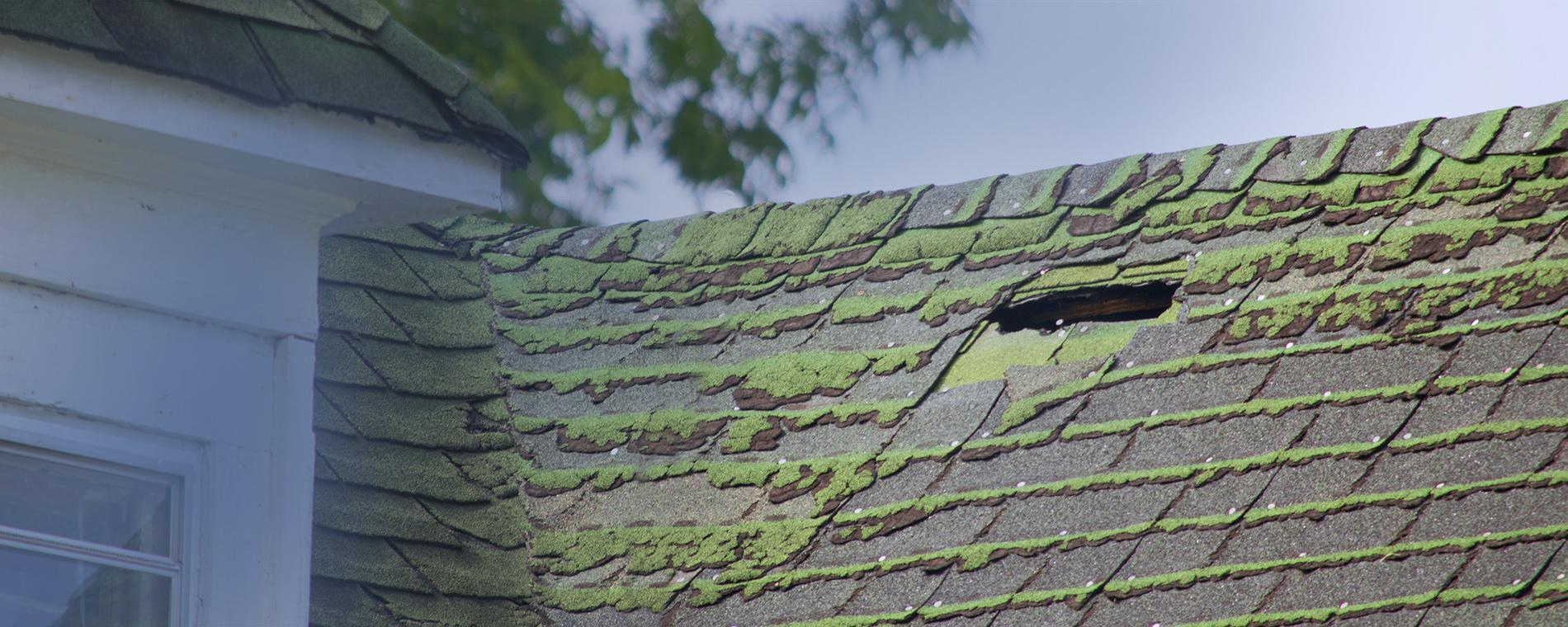Your roof does everything from keeping the rain out to keeping your house warm – and it takes a beating almost every day. Make preventive maintenance a priority and avoid pricey roof leaks and water damage by keeping on top of the condition of your roof and addressing any problems early.
Don’t take your warranty at face value
Your asphalt shingles may have a warranty for as long as 30 years, but factors such as quality of installation, roof pitch, weather conditions over time, air quality, and more can knock years off the life span of shingles.
- Ultraviolet rays weaken the asphalt coating on shingles, eventually causing them to warp or become brittle.
- Hail can knock the surface granules off shingles, leading to small leaks.
- Wind can peel shingles back or even off, allowing water in.
- Lichen and moss can develop in humid areas. Lichen can cause damage when it adheres to shingle granules and can extend strands that penetrate and weaken shingles. Moss can cause shingles to lift off the surface or curl and allow water in; moss also holds moisture in – contributing to hidden decay.
Inspect your roof, gutters, and soffits regularly
Early summer is a good time to inspect your roof and adjacent gutters, soffits, and flashing to identify condition issues. Set aside some time this month to do a visual inspection of your roof. Use binoculars, and take note any of the following:
- Missing, aged, worn, peeling, buckled, cracked, crooked, or bare shingles.
- Blistered (bubbled) materials between the shingles that form when moisture under roofing layers warms up and expands. The expanding material can push the shingle granules off the shingle.
- Algae, moss, and other organic growth or debris.
- Missing, worn, buckled, or cracked flashing.
- Signs of rot or damage to the wood of the soffits and fasciae.
- Blocked gutters and downspouts.
We do not recommend that homeowners use ladders to gain access to their roofs. Unsound ladders, uneven or soft ground, steep roofs, and other factors can make for unsafe conditions. We suggest you consult a professional roofer for on-roof inspections.
Prevent damage
- Keep tree limbs away from your roof. Aside from the danger of limbs rubbing against or falling on your roof, trees can block sunlight, meaning your roof stays damp longer. That sets up the conditions for moss and lichen to grow. It also means that animals have easy access to your roof – and possibly a way into your attic. Finally, trees close to your house are likely to shed leaves, pine needles, twigs, and other biological detritus onto your roof and into your gutters and downspouts. Blockages in those areas can force water under your shingles when the water is prevented from draining.
- Inspect your attic to ensure you have adequate ventilation and insulation. An inadequately vented or insulated attic can cause roof damage in the summer and winter. In hot weather, air trapped in the attic can be as high as 50° above the outside temperature, potentially causing premature aging and damage to your shingles. In the winter, ice dams can form over poorly insulated and ventilated areas, potentially tearing shingles and forcing melted water into your house.
Did you know?
If your roof is four years old or less, your homeowner insurance premium could be reduced. Houses with newer roofs are much less susceptible to many types of damage, so we make sure our rates credit homeowners who keep on top of this crucial aspect of home maintenance.
Contact Us
Our Risk Coaches™ are licensed insurance professionals who are trained to look at coverage from your perspective. They’re glad to help you navigate the often-perplexing world of insurance coverage. Contact your local Risk Coach professional or call us at 800.342.5342, Monday through Friday, from 8:00 a.m. to 8:00 p.m. ET.




